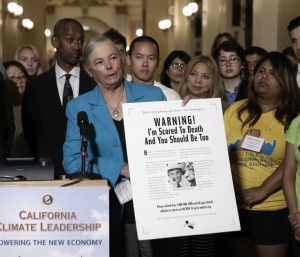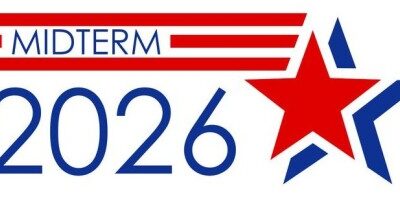California’s Effort To Set 2030 Greenhouse Gas Emissions Fails
What are the implications for ongoing climate efforts?

In another, even bigger setback for the environmental community in California, SB 32 (Pavley), the bill to set greenhouse gas targets for 2030 and 2050, was pulled yesterday and will be tried again next year. The winners are the oil companies, who face tough regulations and competition from California’s climate efforts.
The failure is a big sting for climate advocates in the leading state on this issue. I’m not an expert on the politics, but it appears from press reports that the culprit was oil industry-funded opposition and concern from lawmakers that they won’t have much say in the implementation process. On this score, they are correct: AB 32 was a substantial delegation of authority to the California Air Resources Board, with a bill that clocked in at just twelve pages, leaving the agency with wide rein to implement (compare that to the federal climate legislation back in 2009, which was over a thousand pages of legislated deal-making, rather than being a wide grant of authority to the U.S. Environmental Protection Agency to implement).
So what does the failure mean for ongoing climate efforts? Well, at the very least, we know AB 32 authority still controls, with the state on track to meet the 2020 targets. AB 32 also binds California to those continuing emissions levels beyond 2020, as Cara explained. So that means we’ll have at a minimum a flat-lining of emissions after 2020.
Beyond that authority, many (if not most) of the climate measures under AB 32 come from independent legislative acts, such as renewable energy and energy efficiency mandates (both of which may be strengthened if SB 350 passes today) and SB 375 (Steinberg) on land use, many of which have goals beyond 2020. Incentives for electric vehicles and other renewable fuel technologies will continue, along with federal efforts like the Clean Power Plan and fuel economy standards, plus tax breaks for solar and electric vehicles.
The governor has also issued an executive order that mirrors SB 32 with 2030 goals. But these orders can be changed by future governors, and they ultimately need to be based on legislated authority that may not be there beyond 2020.
Politically speaking, legislators will get another go at this effort next year. Some say it’s tougher to pass in an election year, but the original AB 32 passed in an election year, and that was a non-presidential one when turnout was lower and more conservative. Maybe SB 32 backers learned some lessons for the next effort.
There’s no denying that a failure in 2016, despite other ongoing measures to tackle climate change, could be a serious setback on reducing long-term emissions — not just here in California but worldwide, given the state’s leadership role. But the state’s climate program will continue regardless. And as extreme weather worsens and the benefits of the existing programs are felt by more residents, the politics may improve for these efforts as well.
Reader Comments
One Reply to “California’s Effort To Set 2030 Greenhouse Gas Emissions Fails”
Comments are closed.






Ethan said;
“…….In another, even bigger setback for the environmental community in California, SB 32 (Pavley), the bill to set greenhouse gas targets for 2030 and 2050, was pulled yesterday and will be tried again next year……..”
An even bigger-bigger setback for the environmental community is the continuing delay in issuing Obama’s Clean Power Plan rule, which lends credence to the growing indications that it might not be issued at all (never, ever). Let’m chew on that, choke baby choke, woe is California.